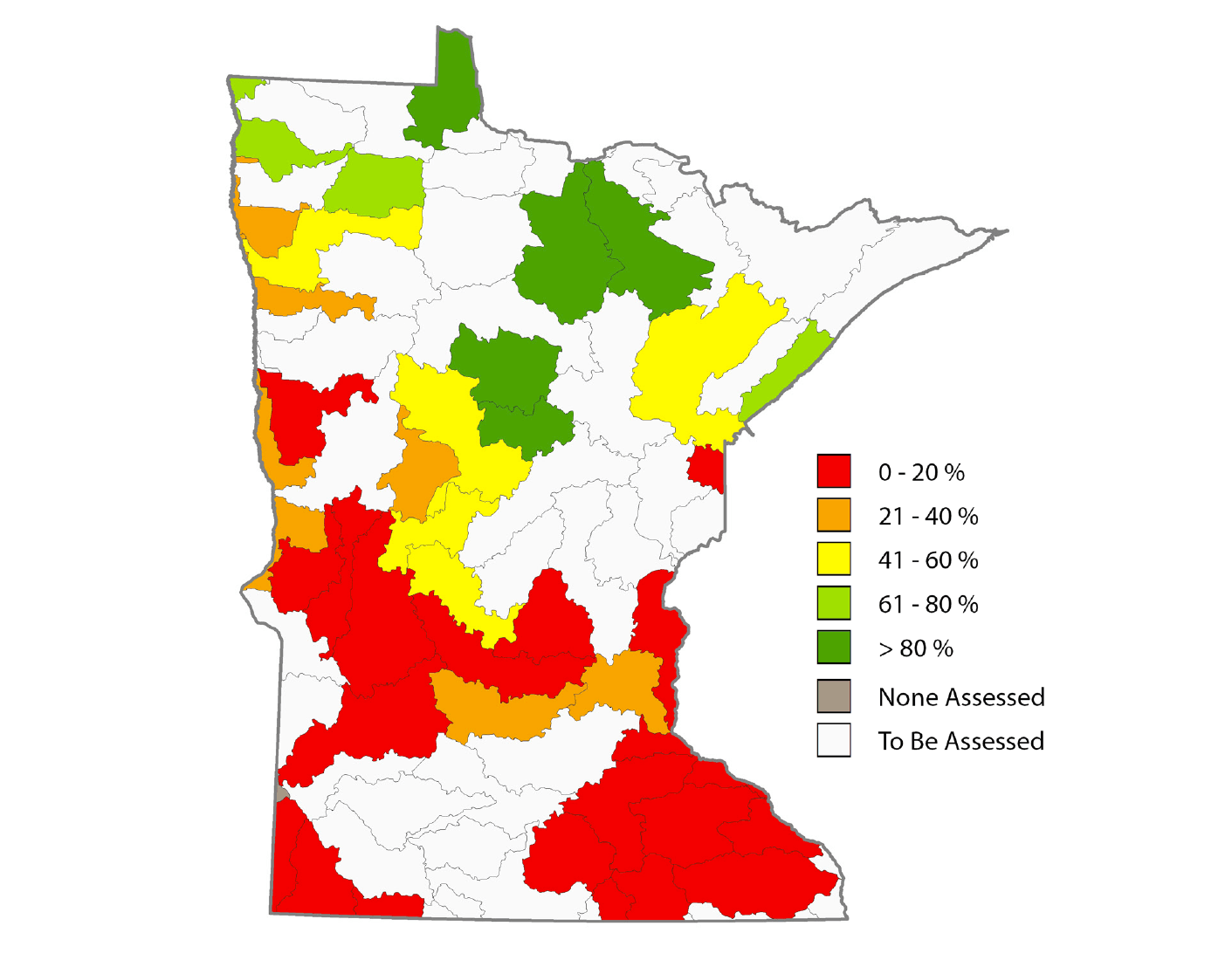Report: Pollutants still plague many southern Minnesota waters

Go Deeper.
Create an account or log in to save stories.
Like this?
Thanks for liking this story! We have added it to a list of your favorite stories.
Updated at 4:15 p.m. | Posted: 11:13 a.m.
Six and a half years after Minnesotans voted to raise taxes to clean up lakes and streams, it's clear the state has a long way to go.
A report released Wednesday representing data from half of the state's watersheds shows half or more of lakes and streams monitored in the southern half of the state are plagued by bacteria, sediment, nutrients and other pollutants.
Turn Up Your Support
MPR News helps you turn down the noise and build shared understanding. Turn up your support for this public resource and keep trusted journalism accessible to all.
Those bodies of water are often too nasty to swim in and can't fully support fish and other aquatic life, according to the report.
With help from the Legacy Amendment, which voters approved in 2008 to raise sales tax revenue for the environment and the arts, the Minnesota Pollution Control Agency is monitoring and assessing lakes and rivers in all of the state's 81 watersheds — geographic areas defined by all of the waters emptying into the same body of water.
Map: Streams and rivers that fully support swimming and recreation

MPCA Commissioner John Linc Stine said improving water quality will take time. Strategies include planting buffers along streams and finding ways to keep water in place instead letting it runoff the land.
"The more water that can be retained on the landscape, the more beneficial our water quality results will be," Stine said.
The agency has now assessed half of the watersheds. Unsurprisingly, lakes and streams in northeastern Minnesota fared far better than those in the southern half of the state. Northeastern Minnesota has little agriculture and is less developed, whereas much of southern Minnesota is cultivated.
Northwestern Minnesota showed mixed results; some watersheds were impaired, whereas others were clean.
"The general pattern is that water quality is exceptionally good in northeastern Minnesota, and it gets poorer as we move to the southwestern part of the state," said Shannon Lotthammer, who directs the MPCA's environmental analysis work.
The report also noted that at least 95 percent of 500 stream sections and more than 1,200 lakes contained fish tainted by mercury.
The report said improvements are possible through strategies such as planting stream buffers, managing fertilizer and manure, restoring wetlands and controlling stormwater runoff.
Stine said that in agricultural and urban settings, Minnesota has engineered ways to get rid of excess water as fast as possible.
"We changed the plumbing," he said. "We dug, we straightened, we accelerated the delivery of water into our channels and into our lakes."
Stine says that leads to stream banks giving way, loading rivers like the Minnesota and Mississippi with sediment. It makes them look a lot more like chocolate milk than water.
"In order to change that," he said,"we need to hold water back."
There's a long list of ways to do that, from restoring wetlands to building rain gardens and planting buffers along stream banks. That's often, however, where the water quality issue becomes political.
Map: Streams and rivers that fully support fish and other aquatic life

Gov. Mark Dayton, who has called for requiring buffers on all waterways, acknowledged today that he might not get what he wants this legislative session.
Just seven weeks ago, Dayton blamed most of the state's water quality problems on agriculture. His comments angered farmers and brought progress on his buffer initiative to a standstill.
But during a news conference, the governor declared the state's polluted lakes and streams were everyone's responsibility.
Instead of insisting on mandatory buffers, Dayton said he wants to work with lawmakers to agree on legislation that will improve water quality.
"Well, I'm hopeful. The last three weeks of the legislative session are always determinative," Dayton said. "But it's certainly brought these issues into the forefront of the public consciousness and of the legislative consciousness."
Republican lawmakers who attended the news conference say they want to find common ground with the governor and noted his change in tone in describing agriculture's responsibility for water quality problems.
"We've got a ways to go," said Rep. Denny McNamara, R-Hastings. "We still have differences, significant. But I'm hopeful we can find something that works for all of us."
The buffers question is not the only point of contention between Dayton and some lawmakers on clean water.
The GOP-controlled House and DFL-controlled Senate are pushing legislation that the governor says could undermine the Minnesota Pollution Control Agency's ability to protect lakes and rivers from pollution.



